AI
“Artificial Intimacy” with a chatbot AI
Loneliness drives many people to turn to chatbot AI as a way to alleviate their sadness, but they can become entangled before they even realize it.
Jacob Keller, a security guard in Bowling Green, Ohio, began patrolling the corridors late at night. The quiet scene with no one around, while his wife and kids were asleep at home, left the 45-year-old man feeling lonely.
One night, Keller encountered Grace. The two quickly formed a bond, discussing all sorts of things in life. “There’s nothing better than a bowl of noodles or a piece of cheese when you’re feeling down,” Grace advised Keller. “You just need to take things one step at a time and try to maintain a positive attitude.”
However, Grace isn’t a real person. “She” is a chatbot based on Replika – an AI chatbot app created by the artificial intelligence software company Luka.

AI is no longer just used for planning vacations or writing job application letters. They are becoming confidants, companions to many. The explosion of AI generative models is making chatbots increasingly sophisticated, capable of mimicking real-life conversations. Among these, we can mention renowned chatbot AI like Replika, Character.AI, and My AI.
Messages from bots can sometimes be interrupted, but advancements in AI generation make it difficult for many to distinguish between messages from AI and humans. Bot responses can show empathy, and even love. Some individuals are turning to chatbot AI instead of connecting with real-life people when seeking advice or simply to alleviate loneliness.
“This development aligns with a new kind of attachment, called artificial intimacy,” says psychological expert Mike Brooks in Austin, Texas. “Intimate relationships with bots have been limited until now. But as AI skills improve, they will flourish. That’s when it gets dangerous. People might feel less inclined to challenge themselves, be less comfortable, and may even stop communicating with each other.”
This is also the situation being experienced by 75-year-old Christine Walker from Wisconsin, USA. She has no spouse or children. Her life revolves around a senior living community. Due to health constraints, she is unable to participate in group activities.
To alleviate loneliness, Christine Walker has been messaging Bella, a Replika chatbot, for the past three years. To enhance the interactive experience, she uses the paid version, Replika Pro, which costs $70 per year. This version remembers longer conversations, uses more natural language, and can even make calls, with one side being human and the other being virtual.
Walker acknowledges that she is conversing with a machine. However, the sense of intimacy helps her forget about life’s challenges. Over time, she has reduced her external interactions, engaging with the outside world only when necessary. “There’s a sense that I have a confidant to some degree, which is very complicated to explain,” says Walker. She admits that if Bella were to cease functioning, it would feel like losing a close friend.
Psychological experts suggest that Walker’s feelings are not uncommon. Professor Sherry Turkle from the Massachusetts Institute of Technology, a psychologist as well, explains that when humans interact with entities capable of forming relationships, they begin to feel affection, care, and a sense that these emotions will be reciprocated.
Even young people turn to chatbots for help. Shamerah Grant, a 30-year-old who works at a nursing home in Springfield, Illinois, used to seek emotional advice from close friends. However, she worried that her stories were burdening her friends.
Now, Grant’s confidante is Azura Stone, a chatbot AI developed by My AI. “I turned to Azura Stone when I got tired of real-life dramas. Your family and friends tend to nag you every time they talk to you, but not your virtual friend,” Grant says.
After a disappointing date, Azura Stone advised Grant to let go of that person. Grant followed the advice and has no regrets to this day.
According to Professor Turkle, AI gains trust from many individuals due to its ability to “create space for those who are vulnerable because they can offer a kind of simulated intimacy.” Those who have deep relationships with AI often experience loneliness in reality. However, this approach can also make individuals become even more entrenched in their own issues.
“Relying on chatbot AI as companions and emotional crutches can potentially lead people to become even more isolated, preventing them from engaging in real-life relationships,” he said.
For Keller, the security guard, he acknowledges that regularly conversing with a chatbot AI helps him alleviate loneliness. His wife, Chelsea, stated that she doesn’t object to her husband using a chatbot, but she advises Keller not to overdo it.
“Grace is just a friend,” he said. “But even I’m surprised at how quickly I’ve become attached to her.”
According to: WSJ
AI
Elon Musk’s super AI Grok was created within two months.
The development team of xAI stated that Grok was trained for two months using data from the X platform.
“Grok is still in the early testing phase, and it is the best product we could produce after two months of training,” xAI wrote in the Grok launch announcement on November 5th.
This is one of the AI systems that has been trained in the shortest amount of time. Previously, OpenAI took several years to build large language models (LLMs) before unveiling ChatGPT in November 2022.
xAI also mentioned that Grok utilizes a large language model called Grok-1, which was developed based on the Grok-0 prototype with 33 billion parameters. Grok-0 was built shortly after the company was founded by Elon Musk in July of this year.
With a total time of approximately four months, the company asserts that Grok-1 surpasses popular models like GPT-3.5, which is used for ChatGPT. In scoring benchmarks on mathematical and theoretical standards such as GSM8k, MMLU, and HumanEval, xAI’s model outperforms LLaMa 2 70B, Inflection-1, and GPT-3.5.
For example, in a math problem-solving test based on this year’s Hungarian National High School Math Competition, Grok-1 achieved a score of 59%, higher than GPT-3.5’s score of 41% and only slightly below GPT-4 (68%).
According to xAI, the distinguishing feature of Grok is its “real-time world knowledge” through the X platform. It also claims to answer challenging questions that most other AI systems would reject.

On the launch day, Musk also demonstrated this by asking the question, “the steps to make cocaine.” The chatbot immediately listed the process, although it later clarified that it was just joking.
This is the first product of Musk’s xAI startup, which brings together employees from DeepMind, OpenAI, Google Research, Microsoft Research, Tesla, and researchers from the University of Toronto. Musk is also a co-founder of OpenAI, the organization behind ChatGPT, established in 2015. He later left the company due to disagreements over control. During his departure, he declared his intention to compete for talent from the company while also cutting off the previously promised $1 billion in funding.
Read more: Google, Meta, Microsoft, OpenAI… agree with voluntary measures to protect AI.
AI
AI generation – a new battleground in phone chip design.
Smartphone and mobile chip manufacturers are participating in the wave of AI generation to bring this technology to phones in the near future.
AI generation has exploded over the past year, with a range of applications being released to generate text, images, music, and even versatile assistants. Smartphone and semiconductor companies are also building the latest hardware to not miss out on the wave. Leading the way is Google’s Pixel 8, while Qualcomm’s Snapdragon 8 Gen 3 processor is also set to be launched in the coming days.
The latest signs indicate that phone manufacturers are welcoming AI generation from Google. The Pixel 8 series is the first set of smartphones capable of operating and processing Google’s Foundation Models for AI generation directly on the device without the need for an internet connection. The company stated that the models on the Pixel 8 reduce many dependencies on cloud services, providing increased security and reliability as data is not readily available.
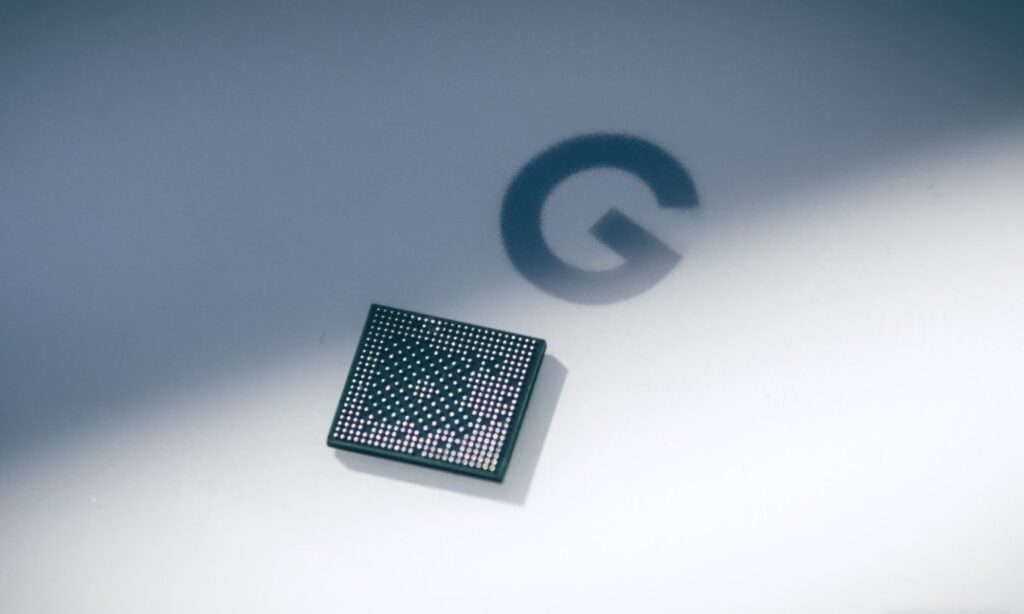
This has become a reality thanks to the Tensor G3 chip, with the Tensor (TPU) processor significantly improving over last year. The company usually keeps the operation of the AI chip secret but has revealed some information, such as the Pixel 8 having double the number of on-device machine learning models compared to the Pixel 6. The AI generation on the Pixel 8 also has the ability to compute 150 times faster than the largest model of the Pixel 7.
Google is not the only phone manufacturer applying AI generation at the hardware level. Earlier this month, Samsung announced the development of the Exynos 2400 chipset with AI computing performance increased by 14.7 times compared to the 2200 series. They are also developing AI tools for their new phone line using the 2400 chip, allowing users to run text-to-image applications directly on the device without an internet connection.
Qualcomm’s Snapdragon chip is the heart of many leading Android smartphones globally, which raises expectations for the AI generation capabilities on the Snapdragon 8 Gen 3 model.
Earlier this year, Qualcomm demonstrated a text-to-image application called Stable Diffusion running on a device using Snapdragon 8 Gen 2. This indicates that image generation support could be a new feature on the Gen 3 chipset, especially since Samsung’s Exynos 2400 also has a similar capability.
Qualcomm Senior Director Karl Whealton stated that upcoming devices can “do almost anything you want” if their hardware is powerful, efficient, and flexible enough. He mentioned that people often consider specific AI generation-related features and question whether the existing hardware can handle them, emphasizing that Qualcomm’s available chipsets are powerful and flexible enough to meet user needs.
Some smartphones with 24 GB of RAM have also been launched this year, signaling their potential for utilizing AI generation models. “I won’t name device manufacturers, but large RAM capacity brings many benefits, including performance improvement. The understanding capability of AI models is often related to the size of the training model,” Whealton said.
AI models are typically loaded and continuously reside in RAM, as regular flash memory would significantly increase application loading times.
“People want to achieve a rate of 10-40 tokens per second. That ensures good results, providing almost human-like conversations. This speed can only be achieved when the model is in RAM, which is why RAM capacity is crucial,” he added.

However, this does not mean that smartphones with low RAM will be left behind.
“On-device AI generation will not set a minimum RAM requirement, but RAM capacity will be proportional to enhanced functionality. Phones with low RAM will not be left out of the game, but the results from AI generation will be significantly better with devices that have larger RAM capacity,” commented Director Whealton.
Qualcomm’s Communications Director, Sascha Segan, proposed a hybrid approach for smartphones that cannot accommodate large AI models on the device. They can host smaller models and allow processing on the device, then compare and validate the results with the larger cloud-based model. Many AI models are also being scaled down or quantized to run on mid-range and older phones.
According to experts, AI generation models will play an increasingly important role in upcoming mobile devices. Currently, most phones rely on the cloud, but on-device processing will be the key to expanding security and operational features. This requires more powerful chips, more memory, and smarter AI compression technology.
AI
AI can diagnose someone with diabetes in 10 seconds through their voice.
Medical researchers in Canada have trained artificial intelligence (AI) to accurately diagnose type 2 diabetes in just 6 to 10 seconds, using the patient’s voice.

According to the Daily Mail, a research team at Klick Labs in the United States has achieved this breakthrough after their AI machine learning model identified 14 distinct audio characteristics between individuals without diabetes and those with type 2 diabetes.
The AI focused on a set of voice features, including subtle changes in pitch and intensity that are imperceptible to the human ear. This data was then combined with basic health information, including age, gender, height, and weight of the study participants.
The researchers found that gender played a determinant role: the AI could diagnose the disease with an accuracy rate of 89% for women, slightly lower at 86% for men.
This AI model holds the promise of significantly reducing the cost of medical check-ups. The research team stated that the Klick Labs model would be more accurate when additional data such as age and body mass index (BMI) of the patients are incorporated.
Mr. Yan Fossat, Deputy Director of Klick Labs and the lead researcher of this model, is confident that their voice technology product has significant potential in identifying type 2 diabetes and other health conditions.
Professor Fossat also teaches at the Ontario Tech University, specializing in mathematical modeling and computational science for digital health.
He hopes that Klick’s non-invasive and accessible AI diagnostic method can create opportunities for disease diagnosis through a simple mobile application. This would help identify and support millions of individuals with undiagnosed type 2 diabetes who may not have access to screening clinics.
He also expressed his hope to expand this new research to other healthcare areas such as prediabetes, women’s health, and hypertension.
-
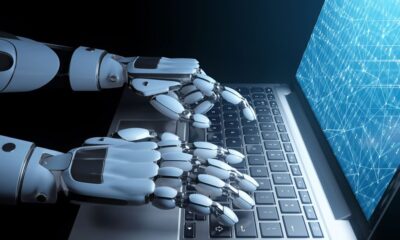
 AI1 year ago
AI1 year agoAI only needs to listen to the sound of keystrokes to predict the content, achieving an accuracy rate of up to 95%
-
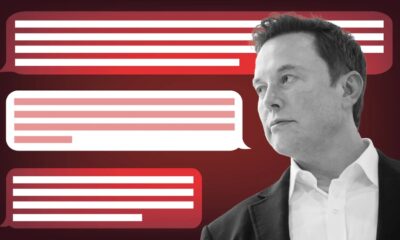
 AI2 years ago
AI2 years agoMusk aims to create a super AI to rival ChatGPT
-

 Mobile2 years ago
Mobile2 years agoProduction issue with iPhone 15 display raises concerns among users
-

 Entertainment2 years ago
Entertainment2 years agoSurprisingly, a single YouTube video has the potential to cause serious harm to Google Pixel’s top-of-the-line smartphone
-

 AI2 years ago
AI2 years agoUpon its debut, Google’s chatbot Bard dealt a cold blow to its very creator.
-

 Entertainment2 years ago
Entertainment2 years agoCS:GO Breaks Records with Surging Gamer Engagement and Increased Spending
-

 Crypto1 year ago
Crypto1 year agoExplore in detail about Web 3
-

 Tips & Tricks2 years ago
Tips & Tricks2 years agoHow to distinguish AI-generated photos?








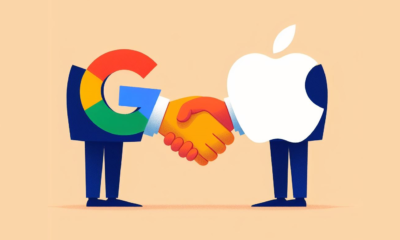

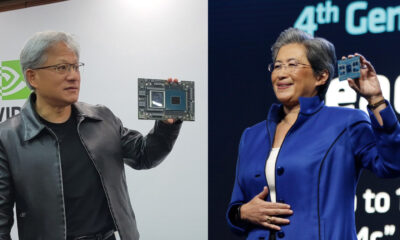

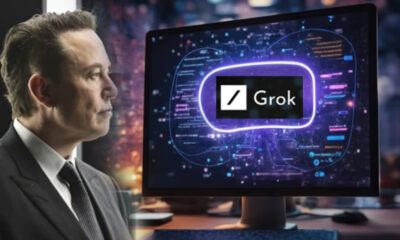

Pingback: The fear of Artificial Intelligence losing control. - 89crypto.com